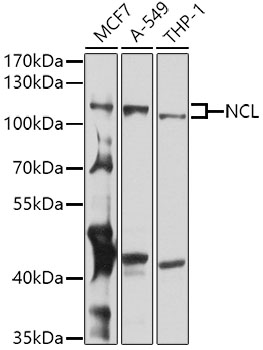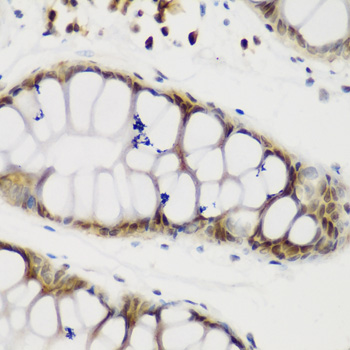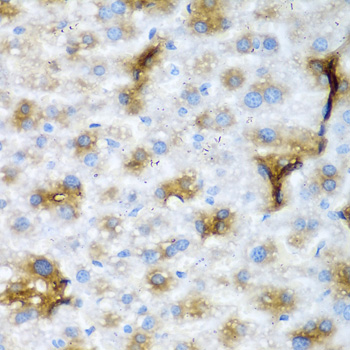-
Product Name
NCL Polyclonal Antibody
- Documents
-
Description
Polyclonal antibody to NCL
-
Tested applications
WB, IHC
-
Species reactivity
Human, Mouse, Rat
-
Alternative names
NCL antibody; C23 antibody; Nsr1 antibody; nucleolin antibody
-
Isotype
Rabbit IgG
-
Preparation
Antigen: Recombinant fusion protein containing a sequence corresponding to amino acids 461-710 of human NCL (NP_005372.2).
-
Clonality
Polyclonal
-
Formulation
PBS with 0.02% sodium azide, 50% glycerol, pH7.3.
-
Storage instructions
Store at -20℃. Avoid freeze / thaw cycles.
-
Applications
WB 1:500 - 1:2000
IHC 1:50 - 1:200 -
Validations

Western blot - NCL Polyclonal Antibody
Western blot analysis of extracts of various cell lines, using NCL antibody at 1:1000 dilution.Secondary antibody: HRP Goat Anti-Rabbit IgG (H+L) at 1:10000 dilution.Lysates/proteins: 25ug per lane.Blocking buffer: 3% nonfat dry milk in TBST.Detection: ECL Basic Kit .Exposure time: 30s.

Immunohistochemistry - NCL Polyclonal Antibody
Immunohistochemistry of paraffin-embedded human gastric using NCL antibody at dilution of 1:200 (40x lens).

Immunohistochemistry - NCL Polyclonal Antibody
Immunohistochemistry of paraffin-embedded mouse liver using NCL antibody at dilution of 1:200 (40x lens).

Immunohistochemistry - NCL Polyclonal Antibody
Immunohistochemistry of paraffin-embedded mouse brain using NCL antibody at dilution of 1:200 (40x lens).
-
Background
Nucleolin is the major nucleolar protein of growing eukaryotic cells. It is found associated with intranucleolar chromatin and pre-ribosomal particles. It induces chromatin decondensation by binding to histone H1. It is thought to play a role in pre-rRNA transcription and ribosome assembly. May play a role in the process of transcriptional elongation. Binds RNA oligonucleotides with 5'-UUAGGG-3' repeats more tightly than the telomeric single-stranded DNA 5'-TTAGGG-3' repeats.
Related Products / Services
Please note: All products are "FOR RESEARCH USE ONLY AND ARE NOT INTENDED FOR DIAGNOSTIC OR THERAPEUTIC USE"
